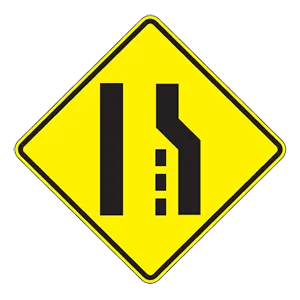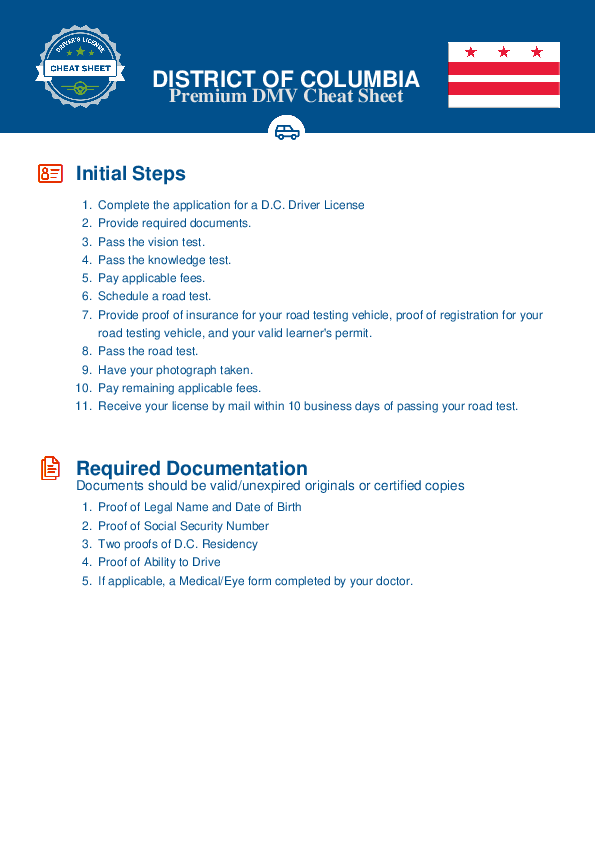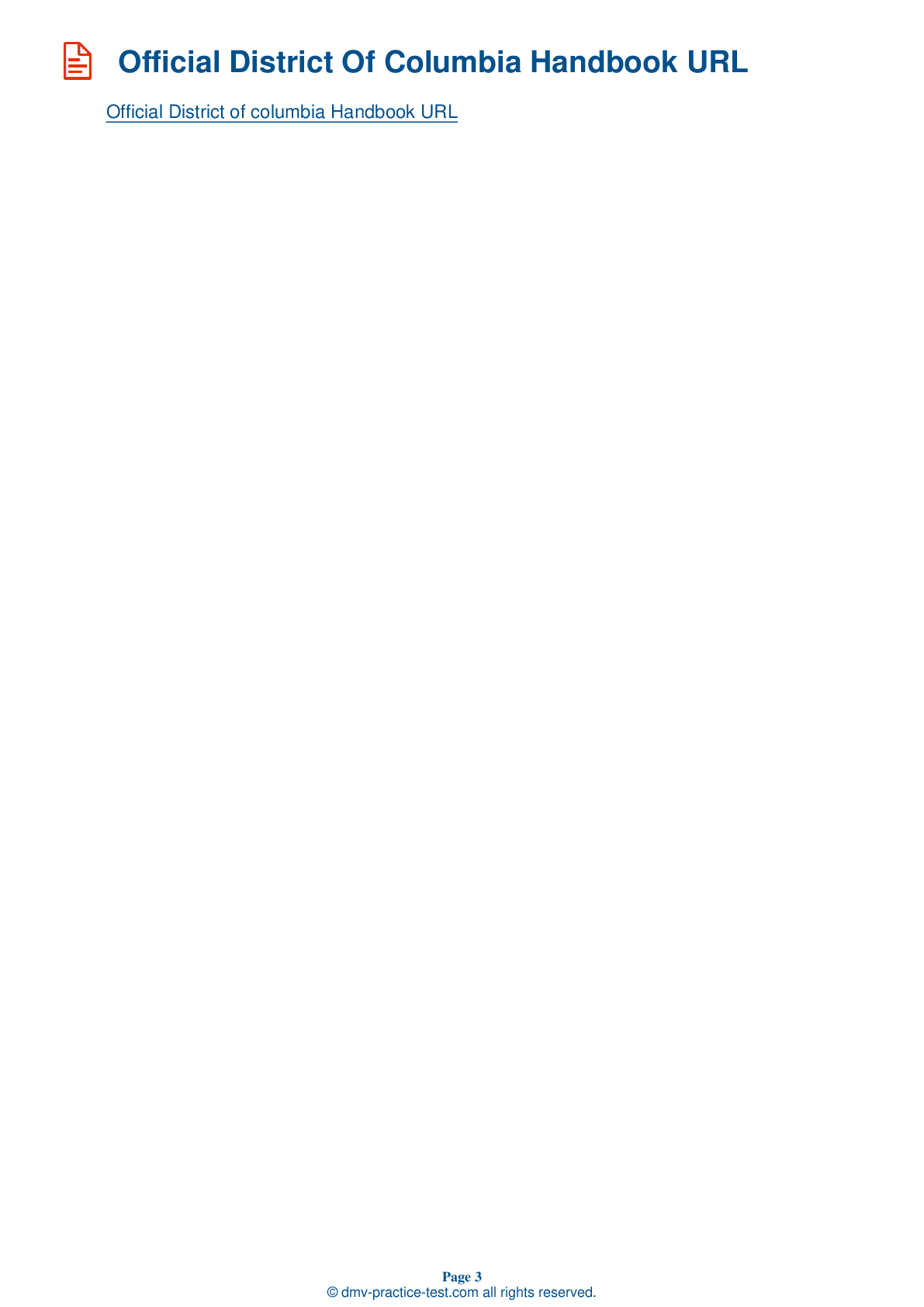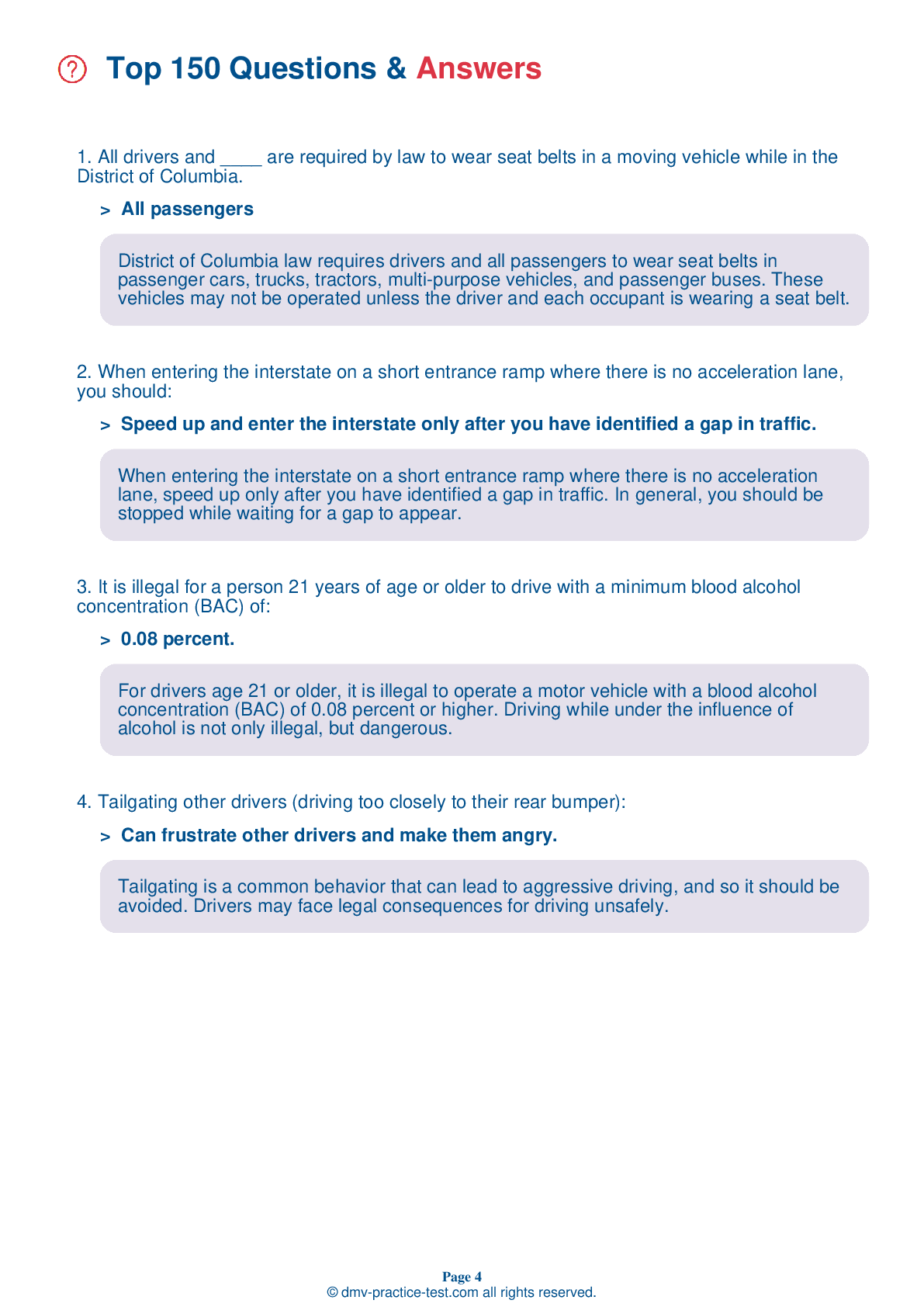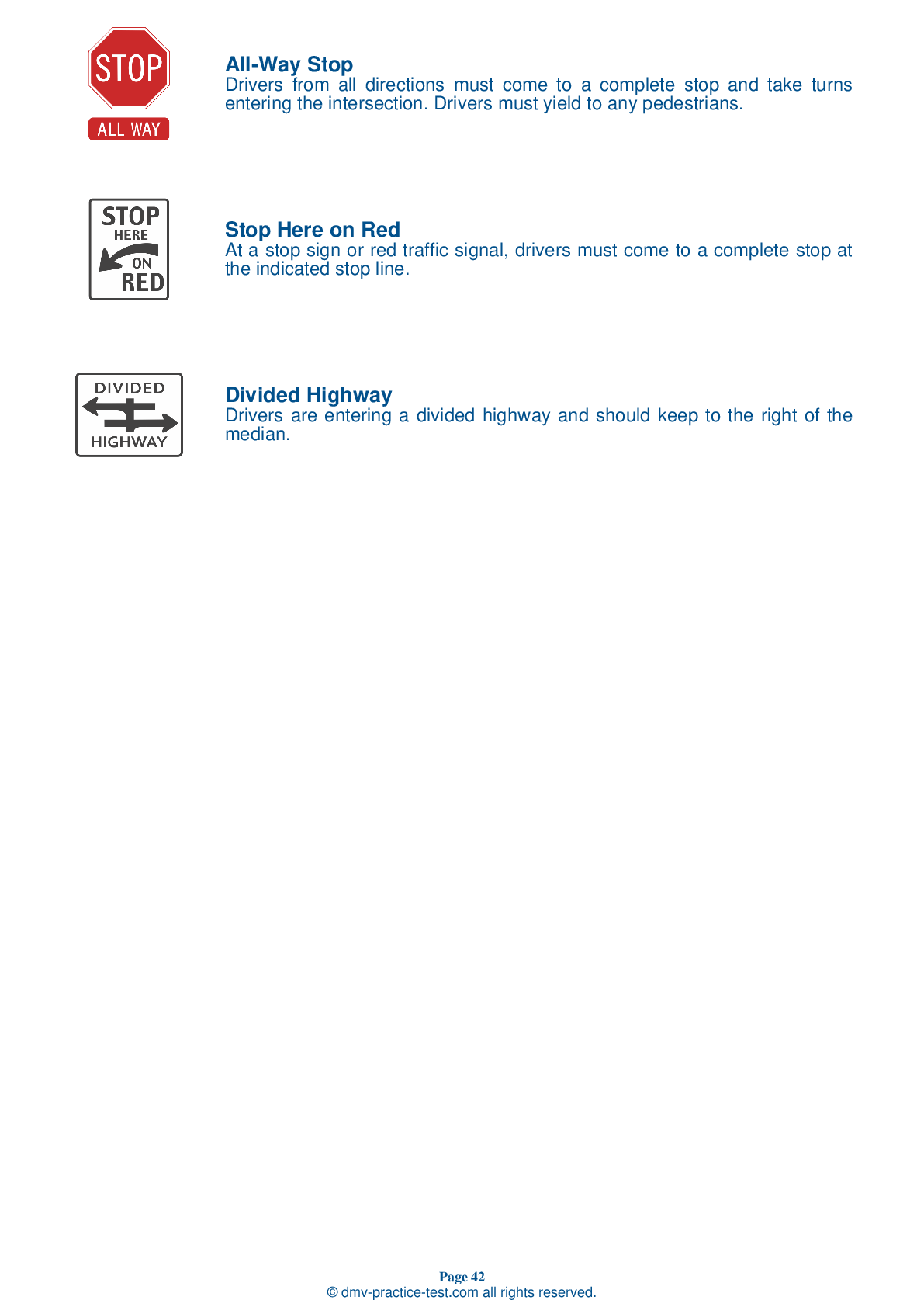FREE District Of Columbia DMV Practice Test #20
This set of District Of Columbia DMV practise tests was been updated for January 2025. It includes questions based on the District Of Columbia Driver Handbook's most significant traffic signs and laws for 2025. Use actual questions that are very similar (often identical!) to the DMV driving permit test and driver's licence exam to study for the DMV driving permit test and driver's licence exam.
On the practise exam, each question gets a tip and explanation to help you remember the concepts. The written component of the official DMV test will include questions about traffic rules, traffic signs, and driving statutes, as well as information from the Driver Handbook.
To achieve the required passing grade, you must correctly answer 20 of the 25 questions. Take our DMV practise exam to help you prepare for your District Of Columbia instruction permit or driver's licence.
The DMV exam is available in several languages.
Using any form of testing help will result in an automatic fail, and the DMV may take further action against your driver's licence, so avoid it.
1 . When entering the interstate, check for a gap in traffic in the nearest lane, adjust your speed to match traffic, signal, and:
Before merging into interstate traffic, you should identify a gap, accelerate to the speed of traffic, and signal. Merge into the gap when it is safe to do so. Be alert to other traffic and do not expect other drivers to clear the lane.
2 . This road sign means:
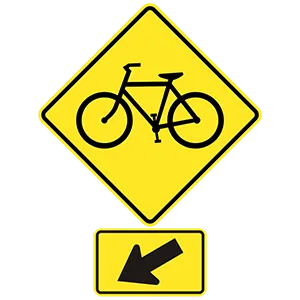
This sign (with the arrow below) indicates the location of a bicycle crossing/path. Drive with caution around this sign because bicycles likely regularly cross or ride beside traffic in the area.
3 . You may drive around the gates at a railroad crossing:
You are required to stop at all railroad crossings when signals warn of an approaching train. These signals may include flashing red lights, a lowered crossing gate, a flagger signaling, or a train’s audible signal of warning. Do not attempt to go around a lowered gate.
4 . This sign is used to warn drivers:
.png)
This sign indicates that the right lane on a multilane roadway ends ahead. Traffic in the right lane must merge left.
5 . What is a potential effect of taking a prescription drug while drinking alcohol?
Legal medications, both prescription and over-the-counter, can impair your ability to drive. They can be particularly dangerous when used in combination with alcohol.
6 . Reaction time is slower after:
Alcohol slows your reflexes and reaction time, reduces your ability to see clearly, and makes you less alert. As the amount of alcohol in your body increases, your judgment worsens and your driving skills decrease. You will have trouble judging distances, speeds, and the movement of other vehicles.
7 . To enter a freeway:
When merging into traffic, you should signal and enter at the same speed that traffic is moving. Always yield to other traffic when entering a roadway.
8 . This sign means:
